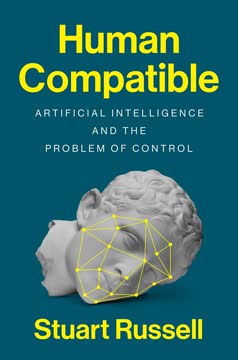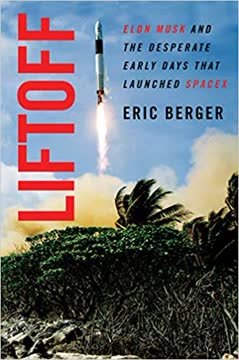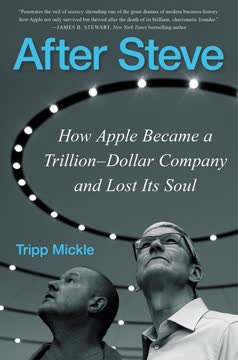Key Takeaways
1. Tesla's origins: Elon Musk's vision for electric cars revolutionizes the auto industry
"Elon Musk is the perfect investor," Martin Eberhard had confided to a colleague during the honeymoon period with Elon Musk.
A visionary partnership. Tesla Motors was founded in 2003 by Martin Eberhard and Marc Tarpenning, who sought to prove that electric cars could be high-performance and desirable. Elon Musk joined as the largest investor in 2004, bringing not only capital but also a grand vision for the future of sustainable transportation.
Challenging the status quo. Tesla's approach was radically different from traditional automakers:
- Focus on high-end electric sports cars first, then move downmarket
- Direct sales model, bypassing traditional dealerships
- Emphasis on software and over-the-air updates
- Vertical integration, producing many components in-house
This strategy allowed Tesla to build a strong brand and prove the viability of electric vehicles, setting the stage for its future growth and influence on the entire automotive industry.
2. Overcoming early challenges: Tesla's struggle for survival and the birth of the Model S
"It's not like I desperately want this fucking role," he said. "I'm doing this because I believe in the goddamn mission, that I think that sustainable energy needs to prosper."
Near-death experiences. Tesla faced numerous existential threats in its early years, including:
- Production delays and cost overruns with the Roadster
- The 2008 financial crisis, which nearly bankrupted the company
- Internal conflicts between Musk and co-founder Eberhard
The Model S gamble. Despite these challenges, Tesla pushed forward with the development of the Model S, a premium electric sedan that would make or break the company. This ambitious project required:
- Raising significant capital from investors and government loans
- Acquiring and retooling the former NUMMI plant in Fremont, California
- Developing new battery and powertrain technologies
- Building a team capable of designing and manufacturing a completely new vehicle
The successful launch of the Model S in 2012 marked a turning point for Tesla, establishing it as a serious player in the automotive industry and paving the way for future growth.
3. Building a unique company culture: Tesla's unconventional approach to manufacturing and innovation
"Elon was risky but he usually made pretty good business decisions," one longtime manager said. "But this just made no sense: Why would you acquire that company, that business, that brand? Except for the fact you're trying to bail it out."
Silicon Valley meets Detroit. Tesla's culture was a blend of tech startup mentality and traditional automotive engineering:
- Emphasis on rapid iteration and problem-solving
- Willingness to challenge industry norms and conventions
- High-pressure work environment with long hours and intense deadlines
Musk's management style. Elon Musk's leadership was central to Tesla's culture:
- Hands-on involvement in engineering and design decisions
- Setting ambitious, often unrealistic goals to drive innovation
- Quick to fire employees who didn't meet his standards
- Prone to making impulsive decisions and public statements
This culture enabled Tesla to innovate rapidly but also led to high turnover, quality control issues, and frequent clashes with regulators and investors.
4. The Model 3: Tesla's ambitious plan to bring electric cars to the masses
"You are now working at a different company," he said. "Everything has changed."
A pivotal moment. The Model 3 represented Tesla's transition from a niche luxury brand to a mass-market automaker. Key aspects of the Model 3 project included:
- Target price of $35,000 to make electric cars accessible to a broader market
- Goal of producing 500,000 vehicles per year by 2018
- Development of the Gigafactory to produce batteries at scale
- Redesign of manufacturing processes for high-volume production
Unprecedented demand. The unveiling of the Model 3 in 2016 generated enormous excitement:
- Over 400,000 pre-orders within weeks
- $1,000 deposits from customers worldwide
- Pressure to deliver on ambitious production timelines
The success of the Model 3 was critical for Tesla's long-term viability and its mission to accelerate the world's transition to sustainable energy.
5. Autopilot and autonomous driving: Tesla's foray into self-driving technology
"I can be on my own private island with naked super models, drinking mai tais, but I'm not," Musk bellowed. "I'm in the factory working my ass off, so I don't want to hear about how hard everyone else in the factory works."
Pushing the boundaries. Tesla's Autopilot system represented a bold step towards autonomous driving:
- Gradual rollout of features through over-the-air software updates
- Controversy over the "Autopilot" name and its implications for driver responsibility
- Fatal accidents involving Autopilot, raising questions about the technology's safety
Regulatory challenges. Tesla's approach to autonomous driving technology faced scrutiny:
- Debates over the ethics of beta-testing autonomous features on public roads
- Investigations by NHTSA and other regulatory bodies
- Competition with other tech companies and traditional automakers in the race for self-driving cars
Tesla's Autopilot program highlighted the company's willingness to push technological boundaries, but also exposed it to significant risks and public criticism.
6. Financial rollercoaster: Tesla's constant battle for funding and profitability
"Bottom line: I believe the Model 3 shares the same genetic defect as the Model S and Model X: it is destined to be a chronic money loser."
Cash burn and capital raises. Tesla's growth strategy required massive investments:
- Frequent equity and debt offerings to fund operations and expansion
- Reliance on customer deposits and regulatory credits for additional cash
- Constant scrutiny from investors and short-sellers over the company's financial health
The profitability question. Tesla's path to sustainable profitability was uncertain:
- Long periods of losses as the company scaled production
- Debate over whether Tesla was a car company or a tech company, affecting valuation
- Musk's promises of future profitability contrasted with ongoing cash needs
Tesla's financial situation remained a source of intense debate, with supporters seeing a path to long-term success and critics warning of potential bankruptcy.
7. Manufacturing hell: The painful journey of scaling production for the Model 3
"Let's say level nine is the worst, okay?" said Musk. "We were in level nine. We're now in level eight."
Ambitious goals meet reality. Tesla's plan to ramp up Model 3 production faced numerous obstacles:
- Delays in setting up the production line and automating processes
- Quality control issues requiring extensive rework
- Supply chain bottlenecks, particularly with battery production at the Gigafactory
The human cost. The push to meet production targets took a toll on Tesla's workforce:
- Long hours and mandatory overtime
- Concerns about workplace safety and injury rates
- Attempts to unionize met with resistance from management
The "production hell" of the Model 3 ramp-up exposed the limitations of Tesla's manufacturing capabilities and the challenges of scaling a car company from scratch.
8. Elon Musk: The driving force behind Tesla's success and controversies
"I wish we could be private with Tesla," he said. "It actually makes us less efficient to be a public company."
Visionary and volatile. Elon Musk's leadership was central to Tesla's story:
- Ability to inspire employees and attract talent
- Skill in generating publicity and building the Tesla brand
- Tendency to make bold, often unrealistic promises
Personal struggles and public scrutiny. Musk's high profile came with drawbacks:
- Conflicts with regulators, particularly the SEC
- Public feuds with critics and short-sellers
- Personal life and relationships becoming tabloid fodder
Musk's outsized personality and unconventional approach were both Tesla's greatest asset and a source of ongoing controversy and risk.
Last updated:
FAQ
What's Power Play: Tesla, Elon Musk, and the Bet of the Century about?
- Tesla's Journey: The book chronicles Tesla's rise, detailing the challenges and triumphs faced by the company and its CEO, Elon Musk. It explores the electric vehicle industry and Tesla's revolutionary impact.
- Elon Musk's Vision: It highlights Musk's ambition to create sustainable energy solutions and his relentless pursuit of innovation, portraying his unique leadership style and the risks he took.
- Industry Context: The narrative provides insights into the automotive industry, detailing the historical context of electric vehicles and the competition Tesla faced from established automakers.
Why should I read Power Play: Tesla, Elon Musk, and the Bet of the Century?
- In-depth Analysis: The book offers a comprehensive look at Tesla's history, making it a valuable resource for anyone interested in business, technology, or environmental issues.
- Lessons in Leadership: Readers can learn about Musk's unconventional leadership style and how it influenced Tesla's culture and operations, illustrating the importance of vision and resilience.
- Understanding Innovation: It sheds light on the complexities of innovation in the automotive sector, particularly in the context of electric vehicles, highlighting the interplay between technology and market dynamics.
What are the key takeaways of Power Play: Tesla, Elon Musk, and the Bet of the Century?
- Importance of Vision: A clear vision is crucial for driving innovation and change, as demonstrated by Musk's transformative goals for Tesla.
- Navigating Challenges: The book illustrates the significance of perseverance in overcoming financial crises and production delays, serving as a reminder that success often requires navigating difficult times.
- Collaboration and Teamwork: It highlights the role of collaboration among Tesla's team members, underscoring the importance of leveraging diverse talents and perspectives.
What are the best quotes from Power Play: Tesla, Elon Musk, and the Bet of the Century and what do they mean?
- “This is really important for the future of the world.”: Reflects Musk's belief in the transformative potential of electric vehicles and sustainable energy, encapsulating Tesla's mission-driven approach.
- “Either they become a niche manufacturer like Porsche or Maserati...or they crack the code on a $30,000 car.”: Highlights the critical juncture Tesla faced in scaling production while maintaining quality and affordability.
- “I’m doing this because I believe in the goddamn mission.”: Reveals Musk's deep personal investment in Tesla's success, illustrating the passion and determination that drive him as a leader.
How did Elon Musk's leadership style impact Tesla's development in Power Play: Tesla, Elon Musk, and the Bet of the Century?
- Visionary Leadership: Musk's strong vision for the future inspired his team and attracted investors, positioning Tesla as a leader in the industry.
- Risk-Taking Approach: Known for taking significant risks, Musk often bet his own fortune on Tesla's success, a strength and source of controversy.
- Hands-On Involvement: Musk's direct involvement in technical details fostered a culture of innovation but also led to tensions within the team.
What challenges did Tesla face in its early years, as described in Power Play: Tesla, Elon Musk, and the Bet of the Century?
- Financial Struggles: Tesla faced severe financial challenges, including cash flow issues and the need for continuous funding, often on the brink of bankruptcy.
- Production Delays: Numerous production delays hindered Tesla's ability to deliver vehicles on time, exacerbated by supply chain issues.
- Market Competition: Tesla contended with skepticism from established automakers and the broader market, facing pressure to prove itself in a competitive landscape.
How did Tesla's Model 3 become a pivotal product, according to Power Play: Tesla, Elon Musk, and the Bet of the Century?
- Mass Market Appeal: Designed to be an affordable electric vehicle, the Model 3 aimed at a broader audience, crucial for making electric cars mainstream.
- Production Goals: Ambitious production targets for the Model 3 were essential for Tesla's long-term viability, determining its ability to scale and compete.
- Investor Confidence: The Model 3's launch restored investor confidence, representing a significant step toward profitability and demonstrating market demand for electric cars.
How did Tesla's partnerships with other companies influence its success, as outlined in Power Play: Tesla, Elon Musk, and the Bet of the Century?
- Strategic Collaborations: Partnerships with companies like Panasonic for battery technology were critical, allowing Tesla to leverage existing expertise and resources.
- Supply Chain Management: Collaborations helped Tesla navigate supply chain challenges, ensuring quality and reliability while focusing on core competencies.
- Market Validation: Partnering with reputable companies provided market validation, enhancing Tesla's credibility and positioning it as a serious player in the industry.
How did Tesla's marketing strategy differ from traditional automakers, as described in Power Play: Tesla, Elon Musk, and the Bet of the Century?
- Direct Sales Model: Tesla sold cars directly to consumers, bypassing traditional dealerships, allowing greater control over the customer experience.
- Leveraging Social Media: Tesla utilized social media to engage with customers and build a community, creating a loyal customer base and generating buzz.
- Focus on Experience: Emphasizing customer experience, Tesla offered test drives and events to showcase its vehicles, contrasting with conventional marketing tactics.
What role did the Gigafactory play in Tesla's future, according to Power Play: Tesla, Elon Musk, and the Bet of the Century?
- Battery Production: Central to reducing battery costs and increasing production capacity, the Gigafactory aims to achieve economies of scale for affordability.
- Sustainability Goals: Designed to be powered by renewable energy, the Gigafactory aligns with Musk's vision of sustainability, a key aspect of Tesla's brand.
- Job Creation: The Gigafactory's construction and operation are expected to create thousands of jobs, contributing to local economies and gaining government support.
How did Tesla's acquisition of SolarCity impact the company, as discussed in Power Play: Tesla, Elon Musk, and the Bet of the Century?
- Increased Debt Load: The acquisition significantly increased Tesla's debt, raising concerns about financial health and sustainability.
- Strategic Integration: Musk aimed to integrate solar energy solutions with Tesla's vehicles, creating a sustainable energy ecosystem, but faced execution challenges.
- Investor Skepticism: The deal was met with skepticism, questioning its rationale and potential to distract from Tesla's core automotive business.
What are the implications of Tesla's growth for the automotive industry, as portrayed in Power Play: Tesla, Elon Musk, and the Bet of the Century?
- Shift to Electric Vehicles: Tesla's success accelerated the industry's shift toward electric vehicles, prompting traditional automakers to invest in EV technology.
- New Market Dynamics: Tesla's rise changed market dynamics, with new entrants and startups increasing competition and innovation in the electric vehicle space.
- Sustainability Focus: Tesla's emphasis on sustainability influenced consumer preferences and regulatory policies, pushing the industry to consider environmental impacts.
Review Summary
Power Play receives mixed reviews, with an average rating of 4.09 out of 5. Many readers find it an engaging and well-researched account of Tesla's history, praising its detailed insights into the company's challenges and Elon Musk's leadership. Some criticize the book's potential bias and dramatization, while others appreciate its balanced portrayal. Readers note the book's fast pace and comprehensive coverage of Tesla's journey, though some question its accuracy. Overall, it's considered a worthwhile read for those interested in Tesla, Musk, or corporate history.
Similar Books










Download PDF
Download EPUB
.epub digital book format is ideal for reading ebooks on phones, tablets, and e-readers.




